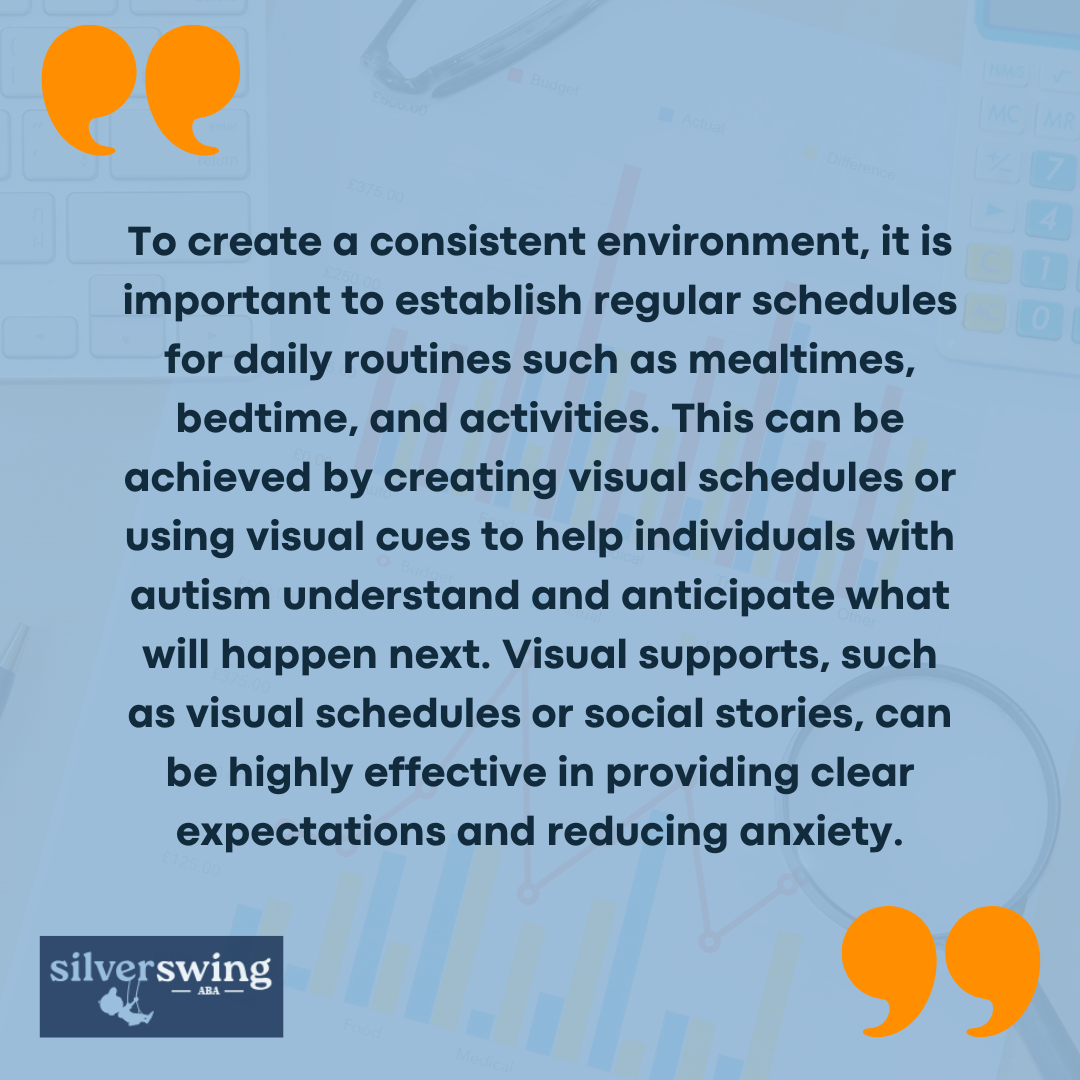Autism is a spectrum disorder, meaning that it manifests differently in each person. Therefore, it is essential to tailor interventions to the unique strengths, challenges, and preferences of individuals with autism. Taking an individualized approach allows for a more personalized and effective intervention plan.
To tailor interventions effectively, professionals, parents, and caregivers need to conduct comprehensive assessments and gather information about the individual’s strengths, interests, and areas of difficulty.
In this article, we’ll look at a selection of appropriate strategies and interventions that are designed for autistic individuals.

Importance of Evidence-Based Practices
When choosing interventions for individuals with autism, it is important to prioritize evidence-based practices. These practices have been scientifically researched and proven to be effective in improving outcomes for individuals with autism. They provide a solid foundation for guiding intervention decisions and ensuring the best possible support.
The National Institute for Health and Care Excellence (NICE) conducts thorough reviews of interventions for autistic individuals every three years to consider new evidence. These reviews provide guidelines for both adults and children, which can assist in making informed choices about interventions.
NICE recommends specific interventions such as employment support programs, structured leisure activities, and social skills training for adults. For children and young people, play-based strategies with parents, carers, and teachers are advised.
It is important to note that some interventions, such as certain biomedical approaches like secretin, hyperbaric oxygen, and chelation, are not recommended by reputable organizations like the National Autistic Society and NICE. These interventions should never be used by autistic individuals of any age, as they have not been shown to be effective in managing the core characteristics of autism.

Collaborative Strategies for Success
Collaboration between parents, caregivers, and therapists is key to achieving successful outcomes during autism interventions. By working together and implementing collaborative strategies, individuals with autism can receive the support they need to thrive.
Let’s have a look at three essential collaborative strategies for success.
Establishing Communication Goals
Establishing clear communication goals is a critical first step in fostering effective collaboration between parents and therapists. By setting communication goals, both parties can work towards improving interactions and understanding.
These goals help create a strategic pathway for enhancing communication skills and addressing specific challenges that individuals with autism may face.
Communication goals may include improving verbal and nonverbal communication, enhancing social skills, or developing alternative communication methods, such as sign language or augmentative and alternative communication (AAC) devices. By identifying and focusing on these goals, therapists and parents can align their efforts and work together to support the individual’s communication development.
Regular Meetings for Optimal Collaboration
Regular meetings between parents and therapists play a pivotal role in reinforcing the collaborative effort required to optimize therapeutic interventions for individuals with autism. These structured interactions provide a platform for open communication, allowing parents and therapists to discuss progress, challenges, and adjustments.
During these meetings, parents can share their observations about the individual’s behavior, progress, and any concerns they may have. Therapists, on the other hand, can provide updates on the interventions being implemented and offer guidance based on their professional expertise.
By maintaining regular communication, both parties can stay informed and actively contribute to the individual’s development.
Sharing Observations for Insights
Sharing observations between parents and therapists is critical in enhancing the understanding of an individual’s unique behaviors and needs within the autism spectrum.
This collaborative effort integrates the individual’s experiences across different settings, providing therapists with nuanced insights and a contextual backdrop to tailor intervention strategies effectively.
Parents’ firsthand observations can offer valuable information about the individual’s strengths, interests, triggers, and challenges. This insight, combined with the therapist’s expertise, allows for a comprehensive understanding of the individual’s needs and preferences. By actively sharing observations, parents and therapists can collaborate to develop strategies that are tailored to the individual’s specific requirements.
Structured Routines for Stability
Establishing consistent routines is essential for individuals with autism. Consistency provides a structured environment that significantly reduces anxiety, enhances behavior, and aids in developing social and communication skills. Predictability is key, as it allows individuals with autism to feel secure and better prepared for their daily activities.

Consistency also extends to the physical environment. Keeping the environment organized and free from unnecessary changes helps individuals with autism feel more comfortable and focused. Minimizing sensory distractions, such as loud noises or bright lights, can also contribute to a more consistent and calming environment.
Managing Transitions Effectively
Transitions can be challenging for individuals with autism as they require shifting from one activity or environment to another. In this case, effective transition management becomes crucial to reduce anxiety and facilitate a smooth transition.
Providing advance notice and warnings before transitions occur can help individuals with autism prepare mentally for the change. Timers or visual countdowns can be utilized to signal the upcoming transition, giving individuals with autism a sense of control and allowing them to mentally prepare for the shift.
Breaking down the transition into smaller steps and providing clear instructions can also be beneficial. This helps individuals with autism understand what is expected of them during the transition and reduces the likelihood of confusion or frustration.
Additionally, using visual supports such as transition charts or visual schedules can aid in navigating transitions more smoothly. These visual tools provide a visual representation of the transition process, allowing individuals with autism to better comprehend and follow the sequence of events.

Diverse Intervention Approaches
There are various approaches that can be utilized to support individuals with autism in their development and overall well-being. Let’s explore some of the diverse intervention approaches that are commonly used.
Behavior Therapy and ABA
Behavior therapy is a commonly used treatment for individuals with autism spectrum disorder (ASD). It aims to encourage desired behaviors and reduce unwanted behaviors by following techniques set out by applied behavior analysis (ABA).
ABA is an evidence-based approach that can improve a child’s life skills, intellectual abilities, and social skills through long-term, intensive therapy.
Early Start Denver Model (ESDM)
The Early Start Denver Model (ESDM) is an intervention approach that works best for children between the ages of 12 to 48 months. It builds upon the principles of applied behavior analysis (ABA) and focuses on creating positive social interactions, enhancing communication skills, and developing cognitive abilities.
Studies have shown that ESDM can lead to improvements in language and communication skills, as well as adaptive behavior.
Pivotal Response Treatment (PRT)
Pivotal Response Treatment (PRT) is a play-based intervention approach that targets pivotal areas such as motivation, self-management, response to multiple cues, and initiation of social interactions. PRT aims to improve not only specific skills but also broader areas of development.
It helps children make significant improvements in social skills and communication. Studies suggest that PRT is effective in building communication skills and promoting social engagement.
Discrete Trial Training (DTT)
Discrete Trial Training (DTT) is an intervention approach based on applied behavior analysis (ABA). It involves breaking down skills into smaller, manageable steps and providing positive reinforcement as the child progresses through each step. DTT is effective in teaching skills to children with ASD and has been used since the 1970s.
By systematically teaching skills in a structured and repetitive manner, DTT helps individuals with autism acquire new skills and improve their overall functioning.

Speech-Language Therapy
Speech-language therapy plays a crucial role in supporting individuals with autism in improving their verbal and nonverbal communication skills. This therapy involves exercises that focus on various aspects of communication, such as describing feelings, identifying items and people, improving speech rhythm, sentence structure, vocabulary, and nonverbal communication skills like sign language, hand signals, or communication through pictures.
Speech-language therapy can be tailored to the specific needs of each individual, helping them to express themselves effectively and enhance their overall communication abilities.
By utilizing diverse intervention approaches, autistic individuals can receive targeted support and interventions that address their unique needs. It’s important to work closely with professionals, such as behavior analysts, therapists, and speech-language pathologists, to determine the most suitable interventions for each individual and promote their success in various areas of development.




